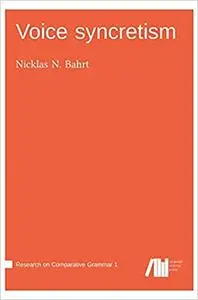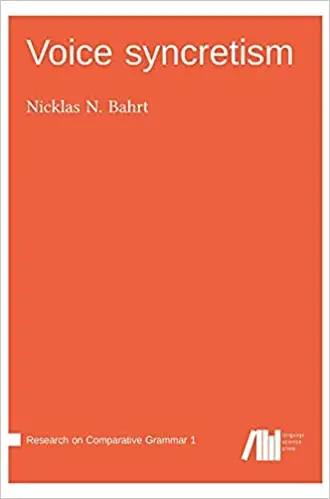Nicklas N Bahrt, "Voice syncretism"
English | ISBN: 3985540152 | 2021 | 340 pages | PDF | 1459 KB
English | ISBN: 3985540152 | 2021 | 340 pages | PDF | 1459 KB
This book provides a comprehensive typological account of voice syncretism, focusing on resemblance in formal verbal marking between two or more of the following seven voices: passives, antipassives, reflexives, reciprocals, anticausatives, causatives, and applicatives. It covers voice syncretism from both synchronic and diachronic perspectives, and has been structured in a manner that facilitates convenient access to information about specific patterns of voice syncretism, their distribution and development. The book is based on a survey of voice syncretism in 222 geographically and genealogically diverse languages, but also thoroughly revisits previous research on the phenomenon. Voice syncretism is approached systematically by establishing and exploring patterns of voice syncretism that can logically be posited for the seven voices of focus in the book: 21 simplex patterns when one considers two of the seven voices sharing the same marking (e.g. reflexive-reciprocal syncretism), and 99 complex patterns when one considers more than two of the voices sharing the same marking (e.g. reflexive-reciprocal-anticausative syncretism). In a similar vein, 42 paths of development can logically be posited if it is assumed that voice marking in each of the seven voices can potentially develop one of the other six voice functions (e.g. reflexive voice marking developing a reciprocal function). This approach enables the discussion of both voice syncretism that has received considerable attention in the literature (notably middle syncretism involving the reflexive, reciprocal, anticausative and/or passive voices) and voice syncretism that has received little or not treatment in the past (including seemingly contradictory patterns such as causative-anticausative and passive-antipassive syncretism). In the survey almost all simplex patterns are attested in addition to seventeen complex patterns. In terms of diachrony, evidence is presented and discussed for twenty paths of developm



